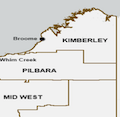Abstract
Ross River virus (RRV), an alphavirus of the Togaviridae family, is the most medically significant mosquito-borne virus of Australia. Past RRV phylogenetic and evolutionary analyses have been based on partial genome analyses only. Three geographically distinct RRV lineages, the Eastern, the Western, and the supposedly extinct North-Eastern lineage, were classified previously. We sought to expand on past phylogenies through robust genome-scale phylogeny to better understand RRV genetic diversity and evolutionary dynamics. We analyzed 106 RRV complete coding sequences, which included 13 genomes available on NCBI and 94 novel sequences derived for this study, sampled throughout Western Australia (1977-2014) and during the substantial Pacific Islands RRV epidemic (1979-1980). Our final data set comprised isolates sampled over 59 years (1959-2018) from a range of locations. Four distinct genotypes were defined, with the newly described genotype 4 (G4) found to be the contemporary lineage circulating in Western Australia. The prior geographical classification of RRV lineages was not supported by our findings, with evidence of geographical and temporal cocirculation of distinct genetic groups. Bayesian Markov chain Monte Carlo (MCMC) analysis revealed that RRV lineages diverged from a common ancestor approximately 94 years ago, with distinct lineages emerging roughly every 10 years over the past 50 years in periodic bursts of genetic diversity. Our study has enabled a more robust analysis of RRV evolutionary history and resolved greater genetic diversity that had been previously defined by partial E2 gene analysis.
